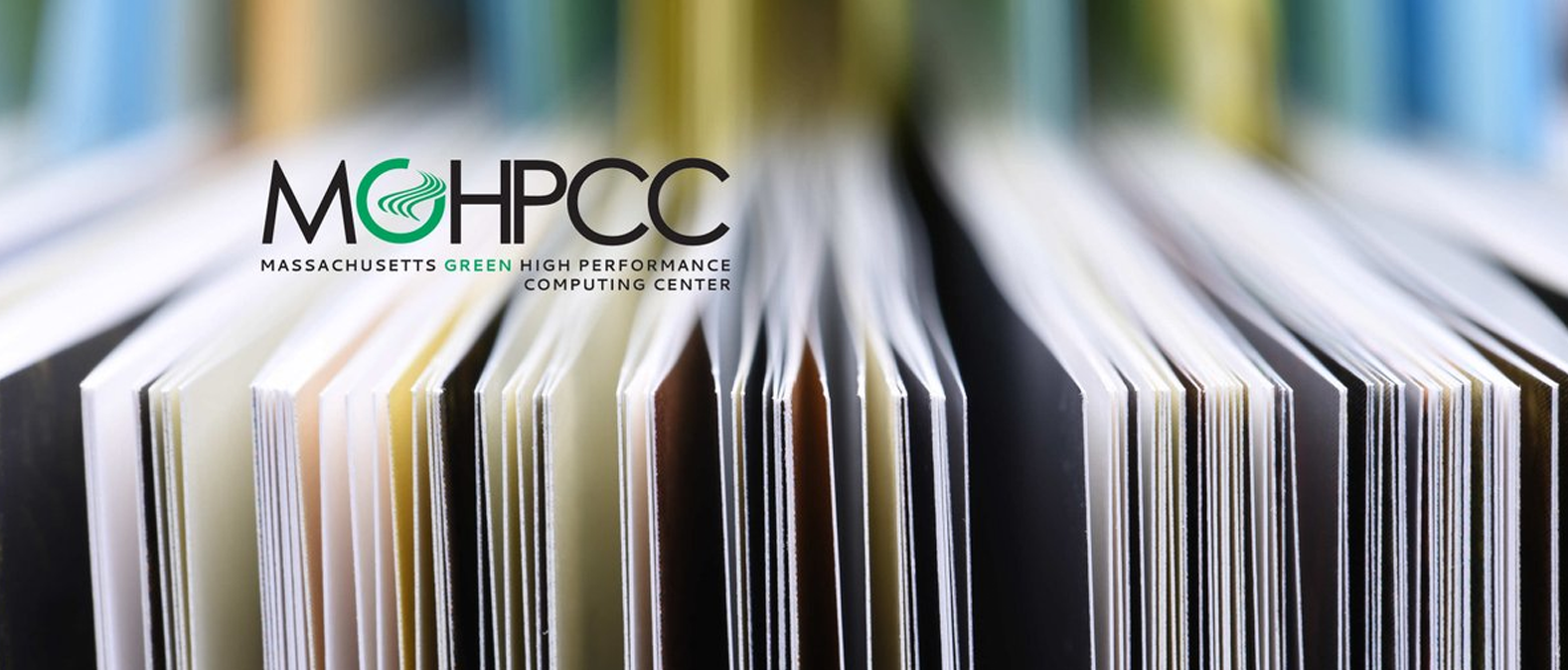
Galaxy morphology? Clustering neural quantum states via diffusion maps? Decarbonization of high-performance computing centers? A selection of recent publications featuring research using the MGHPCC.
Airas, Justin et al (2023), Transferable Implicit Solvation via Contrastive Learning of Graph Neural Networks, ACS Cent. Sci., doi: 10.1021/acscentsci.3c01160
Ayyer, V. et al (2023), The Operator Product Expansion for Radial Lattice Quantization of 3D ϕ4 Theory, arXiv: 2311.01100 [hep-lat]
Balsells, Max et al (2023), Autonomous Robotic Reinforcement Learning with Asynchronous Human Feedback, arXiv: 2310.20608 [cs.LG]
Chantada, Augusto T. et al (2023), NN bundle method applied to cosmology: an improvement in computational times, arXiv: 2311.15955 [astro-ph.CO]
Chen, Tao et al (2023), Visual dexterity: In-hand reorientation of novel and complex object shapes, Science Robotics, doi: 10.1126/scirobotics.adc9244
Courtney, K.C.cet al. (2023), Synaptotagmin-7 outperforms synaptotagmin-1 to promote the formation of large, stable fusion pores via robust membrane penetration, Nat. Commun., doi: 10.1038/s41467-023-42497-8
Franco, G. et al (2023), Evaluating LLP Methods: Challenges and Approaches, arXiv: 2310.19065 [cs.LG]
Gerke, Carter S. et al (2023), Electrochemical C–N Bond Formation within Boron Imidazolate Cages Featuring Single Copper Sites, Journal of the American Chemical Society, doi: 10.1021/jacs.3c08359
Lozano-Dur ´ an, Adrain et al (2023), Information-theoretic causality and applications to turbulence: energy cascade and inner/outer layer interactions, arXiv: 2310.20544 [physics.flu-dyn]
Mondal, Mazharul Islam et al (2023), Observation of multiple van Hove singularities and correlated electronic states in a new topological ferromagnetic kagome metal NdTi3Bi4, arXiv: 2311.11488 [cond-mat.mtrl-sci]
Pandya, S. (2023), E(2) Equivariant Neural Networks for Robust Galaxy Morphology Classification, arXiv: 2311.01500 [astro-ph.GA]
Park, Jung Yeon et al (2023), Modeling Dynamics over Meshes with Gauge Equivariant Nonlinear Message Passing, arXiv: 2310.19589 [cs.LG]
Reuther, A. et al (2023), Lincoln AI Computing Survey (LAICS) Update, arXiv: 2310.09145 [cs.AI]
Rezaei SE, and Schindler P. (2023), Revealing Large Room-Temperature Nernst Coefficients in 2D Materials by First-Principles Modeling, ChemRxiv, doi: 10.26434/chemrxiv-2023-7p14b
Ricke, D.O. et al (2023), Omics Analysis and Quality Control Pipelines in a High-Performance Computing Environment, OMICS: A Journal of Integrative Biology, doi: 10.1089/omi.2023.0078
Silva, C.A. et al (2023), A review on the decarbonization of high-performance computing centers, Renewable and Sustainable Energy Reviews, doi: 10.1016/j.rser.2023.114019
Tang, Rui Jie et al (2023), Time Reversal Differentiation of FDTD for Photonic Inverse Design, ACS Photonics, doi: 10.1021/acsphotonics.3c00694
Teng, Yanting et al (2023), Clustering neural quantum states via diffusion maps, Physical Review B, doi: 10.1103/PhysRevB.108.20515
Wakefield, J.P. et al (2023), Three-dimensional flat bands in pyrochlore metal CaNi2, Nature, doi: 10.1038/s41586-023-06640-1
Wan, Mingyu et al (2023), Enhanced CO2 Reactive Capture and Conversion Using Aminothiolate Ligand–Metal Interface, J. Am. Chem. Soc., doi: 10.1021/jacs.3c06888
Zhang, R. et al (2023), Exposing nontrivial flat bands and superconducting pairing in infinite-layer nickelates, arXiv: 2311.03302 [[cond-mat.supr-con]
Zheng, Jonathan W. and William H. Green (2023), Experimental Compilation and Computation of Hydration Free Energies for Ionic Solutes, The Journal of Physical Chemistry A, doi: 10.1021/acs.jpca.3c05514
Do you have news about research using computing resources at the MGHPCC? If you have an interesting project that you want to tell people about or a paper you would like listed, contact